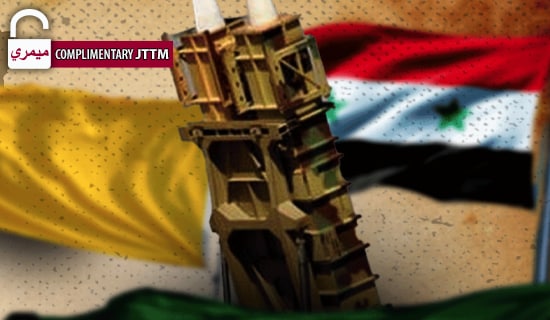The following report is now a complimentary offering from MEMRI's Jihad and Terrorism Threat Monitor (JTTM). For JTTM subscription information, click here.
On January 28, 2024, a drone attack killed three American soldiers and injured about 34 more stationed at a U.S. base known as "Tower 22" in northeast Jordan near the Syrian and Iraqi borders. The U.S. Central Command (CENTCOM) acknowledged the attack,[1] while no group has yet taken responsibility, although Telegram channels affiliated with Iran-backed militias in Iraq celebrated it as another "defeat for America" and warned the U.S. not to escalate the conflict or attack Iran.[2]
According to reports in the Arab media, Iran-backed militias in Iraq and Syria withdrew their forces from several positions following the attack., fearing a strong U.S. response.
On January 29, the London-based Al-Araby Al-Jadeed daily, quoting "security sources in Baghdad," reported that Iran-backed Iraqi militias belonging to the "Islamic Resistance in Iraq" evacuated most of their headquarters, especially those along the Syrian border, immediately after the attack on the U.S. base, fearing a strong U.S. response. According to the sources, only one or two guards remain at most of the headquarters. The militias' leaders also reportedly minimized their telephone conversations and changed locations, to avoid being located and targeted.[3]

The Syrian opposition-affiliated Syrian Observatory for Human Rights (SOHR) reported on January 28 that Iran-backed militias have redeployed their operatives along the stretch of the Euphrates between Al-Bukamal and Al-Mayadin in eastern Syria's Deir Al-Zour governorate, as well as changing their positions in the town of Palmyra, to avoid an aggressive U.S. response to the attack. According to SOHR, the militias abandoned most of their positions near the Al-Rahbah citadel, on the outskirts of Al-Mayadin, and in the city's Al-Tamu neighborhood, and redeployed in civilian houses in various areas. The militias also sent trucks mounted with rocket launchers from Al-Mayadin towards the 'Ayn 'Ali base near the Al-Rahbah citadel, to respond to expected U.S. airstrikes. In addition, they repositioned their forces in Al-Bukamal, while putting their forces into a state of "major alert."[4]

In a follow-up report published on January 29, SOHR added that the Iran-backed militias evacuated 12 positions in the cities of Al-Bukamal and Al-Mayadin and the surrounding areas. Among the evacuated positions are some located in the fields surrounding Al-Mayadin, near the Al-Hasan school in the city, in the Al-Tayyibah and Sabikhan villages in the nearby countryside.[5]
[1] Centcom.mil, January 28, 2024.
[2] See MEMRI JTTM report: Telegram Outlets Linked To Iran-Backed Militias In Iraq Celebrate Drone Attack On U.S. Forces In Jordan, Warn Against Striking Iran Or Resistance Factions, January 28, 2024.
[3] Alaraby, January 29, 2024.
[4] Syriahr, January 28, 2024.
[5] Syriahr, January 29, 2024.
The full text of this post is available to subscribers.
Please login or register to request subscription information from MEMRI





